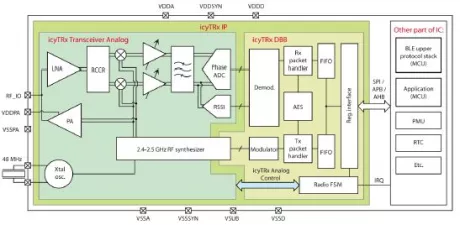Bluetooth 5.1 Low Energy IP
Filter
Compare
6
IP
from
2
vendors
(1
-
6)
-
Bluetooth 5.2 / 5.1 / 5.0 / 4.2 LE Host
- Bluetooth SIG Qualified for BLE 5.2
- Production proven IP, extensively tested, commercially shipping
- Host Protocol Stack and GATT Profile Features
- • Full BLE 5.2 feature set including: EATT, host support for isochronous BIS and CIS, and LE power control

-
Bluetooth 5.2 / 5.1 / 5.0 / 4.2 LE Controller with Link Layer and optional 802.15.4 MAC
- Bluetooth SIG Qualified
- Production proven IP, extensively tested, commercially shipping
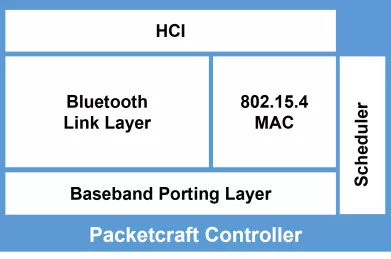
-
Bluetooth 5.3 LE Host
- Bluetooth SIG Qualified for BLE 5.3
- Production proven IP, extensively tested, commercially shipping
- Host Protocol Stack and GATT Profile Features
- • Full BLE 5.3 feature set including: host support for LE enhanced connection update and LE channel classification
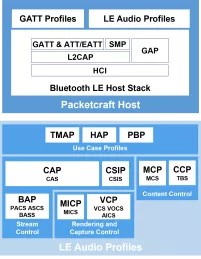
-
Bluetooth 5.4 LE Host
- Bluetooth SIG Qualified for BLE 5.4
- Production proven IP, extensively tested, commercially shipping
- Host Protocol Stack and GATT Profile Features
- • Full BLE 5.4 feature set including: EAD and host support for PAwR
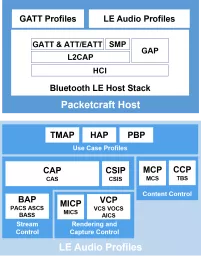
-
Bluetooth 5.3 LE Controller with Link Layer and optional 802.15.4 MAC
- Bluetooth SIG Qualified
- Production proven IP, extensively tested, commercially shipping
- Full BLE 5.3 feature set including: LE enhanced connection update & LE channel classification
- Full BLE 5.2 feature set including: Isochronous BIS and CIS, ISOAL, and LE power control
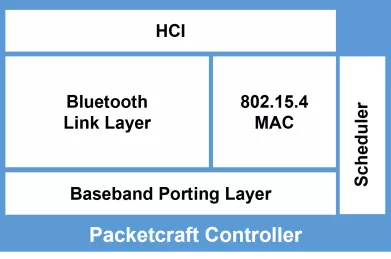
-
Ultra-low-power 2.4 GHz transceiver for Bluetooth 5.3, 802.15.4 and IoT
- The icyTRX ultra-low-power RF transceiver is designed to meet standards such as Bluetooth Low Energy (BLE), 802.15.4 PHY Layer (e.g. ZigBee), and proprietary standards with data rates from 62.5 kBit/s up to 4 Mbit/s.
- icyTRX offers 5.3 mW consumption in receive mode from a 1.0 V supply. icyTRX is a complete transceiver that is designed for miniaturization, yielding an area of analog RF of less than 1 mm2 in 55 nm CMOS, requiring minimal external components thanks to high degree of integration. icyTRX is designed for easy integration into ASICs and SoCs.
